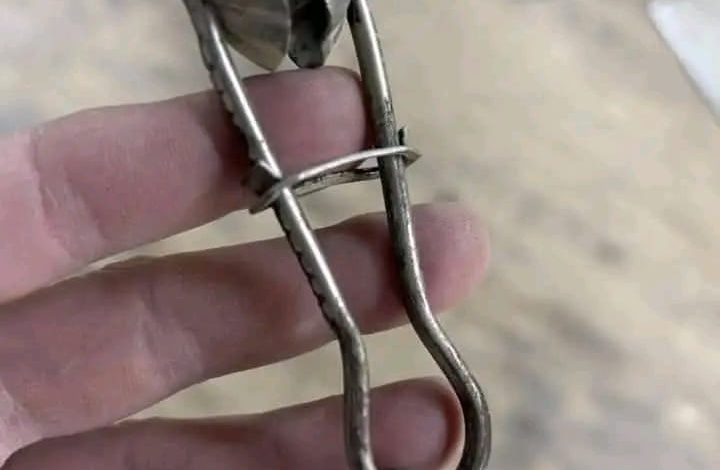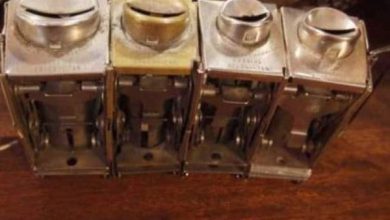Antique Candle Wick Trimmer or Victorian Era Tool – Unraveling the Mystery of a Bygone Gadget 🕯️

ADVERTISEMENT
Antique Candle Wick Trimmer or Victorian Era Tool – Unraveling the Mystery of a Bygone Gadget 🕯️
In today’s world of LED lights and remote-controlled ambiance, the tools once used to maintain candlelight feel like relics from a forgotten chapter of history. The curious object in this photo — small, metallic, and intricate in design — is one such artifact. With its curling mechanism and scalloped, clam-like tips, this peculiar tool captures the imagination and offers a glimpse into the craftsmanship and daily rituals of the past.
🔍 Introduction
At first glance, the item looks like a pair of tongs or a decorative clamp. It’s small enough to fit in the palm of a hand, made from solid metal, and clearly designed with function in mind. But what is it really? Most likely, this tool is an antique candle wick trimmer or a decorative snuffer, used in homes before the age of electricity.
Such devices were essential for households that relied on oil lamps and candles. Trimming the wick of a candle prevented it from producing excessive smoke and soot, extended its burning life, and kept the flame clean and steady.
🔧 Description and Function
Based on its appearance and structure, here’s what this tool likely represents:
-
Candle Wick Trimmer (Snuffer): The curved, cup-shaped end was designed to catch the trimmed piece of burnt wick, preventing it from falling into the wax. The mechanism would cut and hold the debris in one action.
ADVERTISEMENT
-
Scissor-Like Functionality: It operates similarly to a pair of scissors or snipping tongs, but its rounded blade ensures a blunt, clean trim rather than a sharp cut.
-
Ornamental Design: The curled wire and decorative flourishes suggest this tool was not just functional but also meant to be visually appealing — possibly hung near a fireplace or part of a formal table setting.
The addition of a screw loop at the end may indicate it could be hung from a wall, a hearth stand, or even clipped onto a candelabra stand for easy access.
🕯️ Historical Context
During the 18th and 19th centuries, tools like this were found in nearly every household that used candles for lighting. In aristocratic homes, wick trimmers could be made of silver or brass and often carried engraved initials or ornate patterns. In simpler settings, iron or tin versions like the one pictured were common.
Proper candle maintenance wasn’t just about aesthetics — it was about safety and economy. A poorly trimmed wick could cause dripping, smoky flames, or even fires. Thus, these tools played an important part in domestic life.
ADVERTISEMENT
🗝️ Collectible and Decorative Value
Today, antique wick trimmers are sought after by collectors of vintage tools and period-specific decor. They’re often found in estate sales, vintage shops, or museum displays. For history enthusiasts, owning such a piece is like holding a small artifact from a time when light itself was a luxury to be managed with care.
This specific piece, with its delicate curves and durable build, may also serve as a unique conversation starter or a charming accent in rustic or vintage-style home decor.
✨ Conclusion
This antique metal tool may seem unfamiliar now, but it once played a vital role in daily life — a time when candles lit every room and the soft glow of a flame depended on careful maintenance. Whether it was used to trim wicks, snuff flames, or serve some other specific domestic function, it speaks to a time when even the simplest tools were crafted with elegance and intention. Holding such a piece is like holding a slice of history — quiet, useful, and full of story.
ADVERTISEMENT




